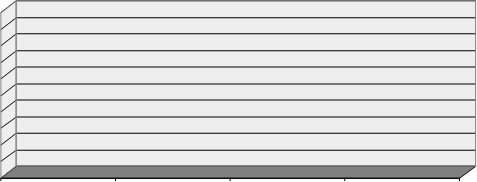
Collecting Information
Letís collect some information about the people in your class or even the people who attend classes at your learning location. We can use the information to draw a bar graph. For each eye colour listed, find out how many people have that particular eye colour.
| Eye Colour | Number of People |
|---|---|
| brown | |
| green | |
| hazel | |
| grey |
Title:

Take the information that you collected and show it on the bar graph above. Make sure you give the chart a title. Also, make sure you label the horizontal axis and vertical axis.
Pareto Diagrams were developed in the 1800s by an economist named Vilfredo Pareto. He studied who had the most money in Italy. He found that 20% of the families had 80% of the wealth in the country. This rule was called the 80-20 principle. This means that there are often just a few people or things (20%) that make most of the things (80%) happen.
So, for example, at the ABC Company, 80% of the absences from work come from just 20% of the employees. Many companies use the Pareto principle to look at many reasons for a quality problem and then find the most critical (important) cause or reason.
A Pareto Diagram is a bar graph with a line graph added to show us if one category has more data than another. If it does, then we have found the most critical reason for the problem. Letís use an example to help us understand.
The owners of the Black Cat Diner asked their customers to fill out Customer Service Cards. After three months, they looked at all the cards. This is what they found:
| Comment | Number of Negative Responses |
|---|---|
| Diners are treated politely. | 5 |
| Food always arrives at the table hot. | 32 |
| The buffet table is always clean. | 19 |
| The service is fast. | 3 |
| The customers receive their bills quickly | 2 |
| The restaurant is well-lit and comfortable. | 1 |
| The washrooms are always clean and fresh. | 15 |